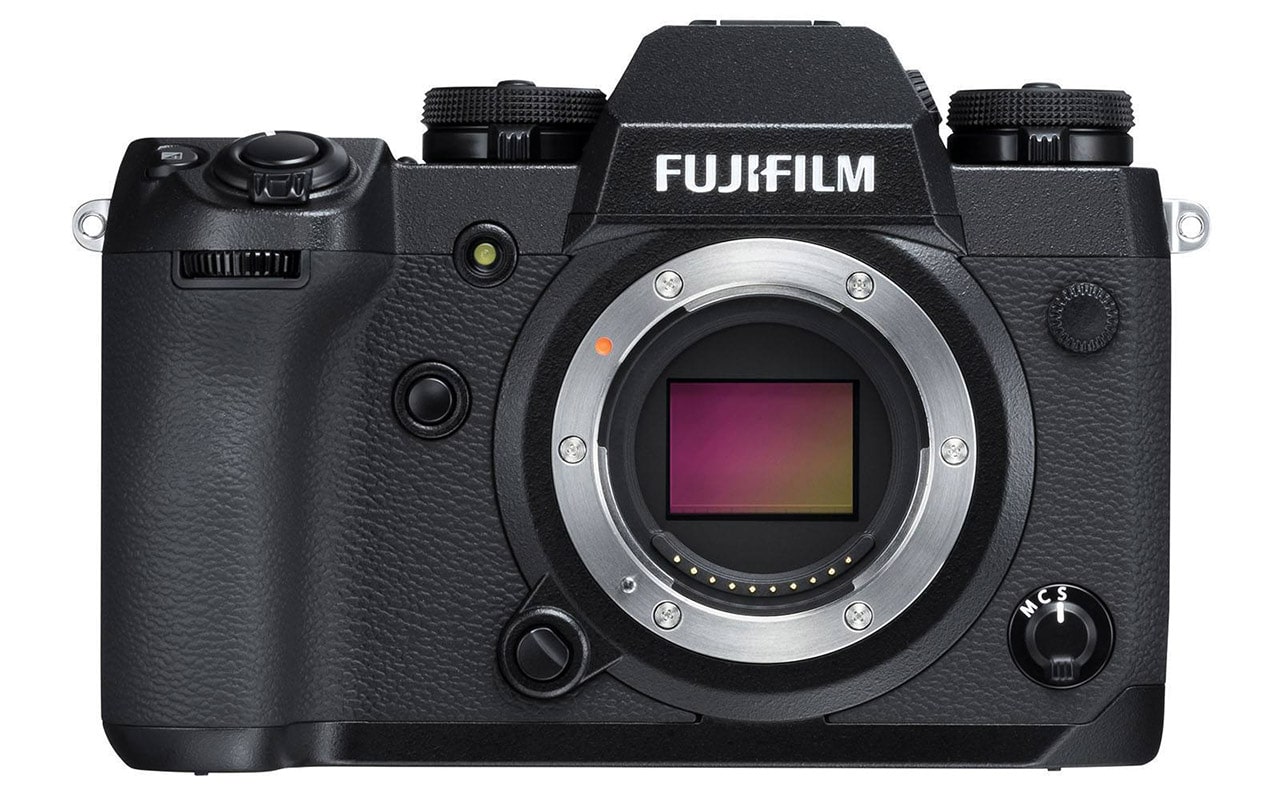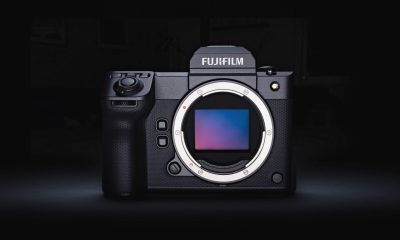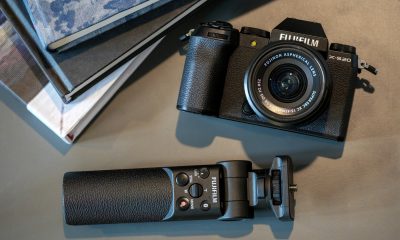Cameras
Fujifilm X-H1 is company’s first truly video-centric camera
More substance over style

Fujifilm has made a reputation for itself with its classic-looking cameras and knack for coming up with a range of filters for all kinds of tastes. The X series of mirrorless cameras have been the flag bearers of the company, but none have really focused on video recording as much as the newly launched X-H1 we’re seeing right here.
It’s still a mirrorless interchangeable-lens camera sporting an APS-C image sensor — which isn’t as large as a full-frame sensor, but helps keep the X-H1 more affordable and able to use Fujifilm’s growing selection of lenses.
Beginning March 1, you can buy the X-H1 for US$ 1,900 (body only). While that may still seem hefty to videographers on a budget, there’s more to the camera than just its professional design.
Fujifilm calls the X-H1 the best-performing entry in the entire X series line of mirrorless cameras. That’s a bold statement considering how great the X-T2 and X-Pro2 are, but there’s some truth to that.
For one, the X-H1 uses the same 24.3-megapixel X-Trans CMOS III found in the brand’s other high-end cameras. Combined with the X-Processor Pro image processor, it can shoot at an ISO ranging from 200 to 12800 and at a continuous speed of 14 frames per second.
What really sets it apart is the inclusion of in-body image stabilization. This means you can attach any compatible lens and you’ll have steady shots throughout your footage. As for the output itself, the maximum bit rate is at 200Mbps and you can hit up to 30fps for 4K content.
In terms of physique, it shares similarities with the medium format (and much pricier) GFX 50S. The most distinguishable feature is the monochrome display on top for a quick look at exposure settings, as well as dust and water resistance for outdoor shooting. There’s also a tilting 3-inch touchscreen LCD at the back and 3.69-megapixel electronic viewfinder.
 There are more features geared toward serious videographers, but what’ll attract casual users more is the Eterna film simulation mode, which gives movies a more ideal, instantly attractive look, plus another mode to reduce flicker while shooting indoors under artificial lighting. Those who want to connect this to their smartphone will be glad to know there’s integrated Wi-Fi and Bluetooth connectivity.
There are more features geared toward serious videographers, but what’ll attract casual users more is the Eterna film simulation mode, which gives movies a more ideal, instantly attractive look, plus another mode to reduce flicker while shooting indoors under artificial lighting. Those who want to connect this to their smartphone will be glad to know there’s integrated Wi-Fi and Bluetooth connectivity.
The X-H1 has all the makings of a great addition to a cinematographer’s arsenal, but only time will tell if it’ll be able to stand against the giants of Sony, Canon, and Nikon.

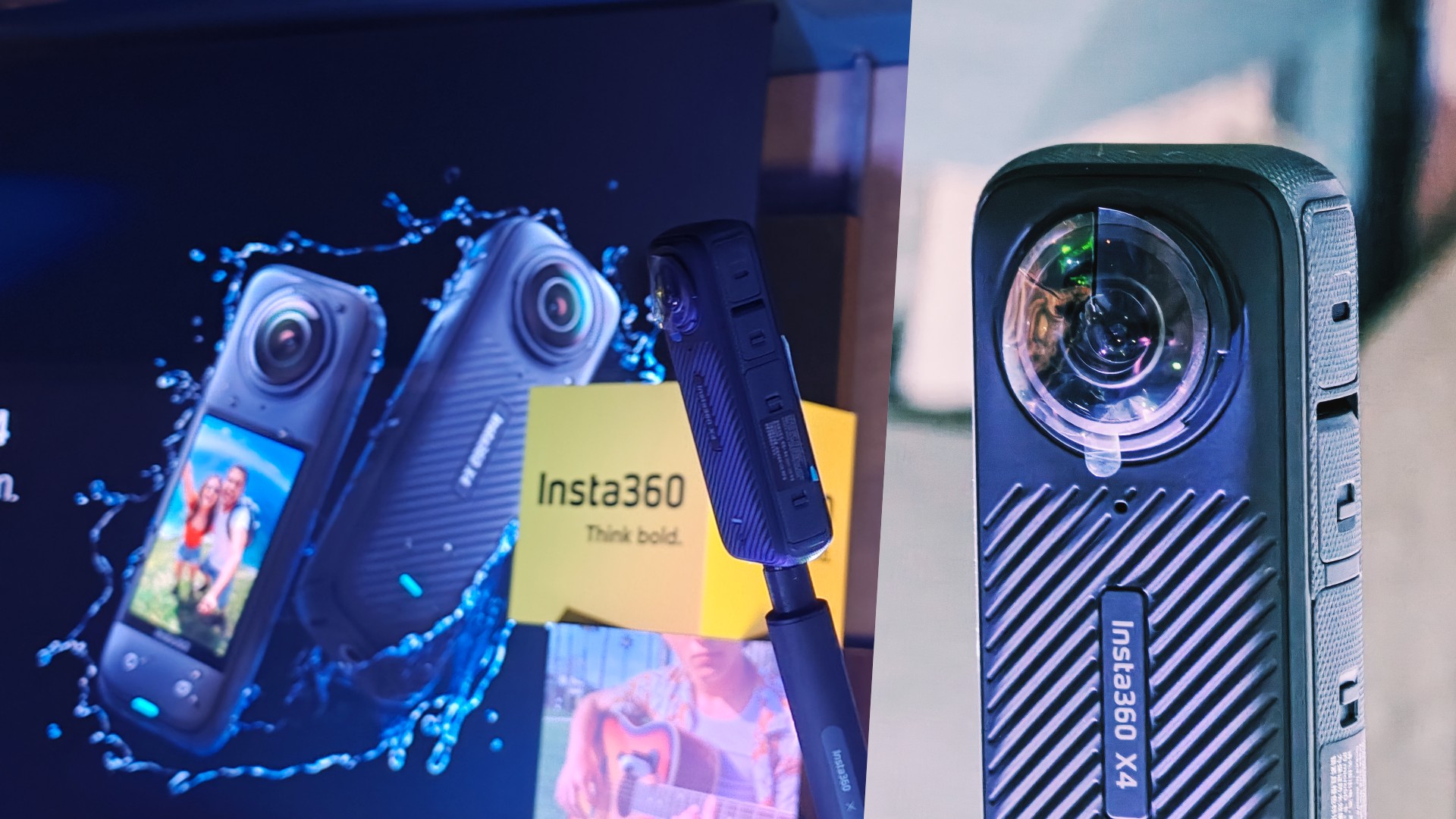
Insta360 is redefining what action cameras are capable of with the introduction of the Insta360 X4. Insta360’s latest offering allows users to film 8K resolution 360-degree videos. In addition, it can record slow-motion 4K videos at up to 120fps.
As expected, the X4 retains Insta360’s “shoot first, point later” ability and invisible selfie stick effect. Moreover, it doubles as a traditional action camera with “flat” captures in Single-Lens mode at up to 4K at 60fps.
The Insta360 X4 is available for US$ 499.99/ PhP 30,990 on the official Insta360 store, Amazon, and other retailers.
Incredible third-person views at 8K
The 8K at 30fps resolution is the highest setting for a 360-degree action camera yet. With such high resolution, users can expect detailed and sharp videos even after reframing, or choosing which specific angle to include in the capture.
For slow-motion, users can now film 4K videos at 100fps for cinematic shots slowed down four times. Furthermore, the highest resolution for a 60fps 360-degree video is upgraded to 5.7K. You may also use the X4 to take stills, as it is capable of 72MP 360-degree photos.
Two cameras in one
Aside from its default 360-degree capturing mode, users may utilize the Insta360 X4 as a regular wide-angle camera. They may shoot a first-person POV video with Single-Lens mode from a chest-mounted position. “Regular” means not having the fish eye-looking effect from the 360-degree mode and having ordinary, flat-looking images instead.
Under the Single-Lens mode, users will be able to record 4K videos at 60fps with an ultra-wide 170-degree field of view. This can be upgraded even more with MaxView while retaining 4K resolution at 30fps. Meanwhile, Me Mode, which erases the selfie stick, can film 4K at up to 120fps.
There are also upgrades on the X4’s creative shooting modes. Bullet Time can now shoot slow-mos at 5.7K at 120fps, or even 3K at an astounding 240fps. Hyperlapse videos, meanwhile, can be recorded in 8K quality.
Action specialist
A 5nm AI chip powers the Insta360 X4, along with a smart control system with Voice and Gesture Control features, and a host of AI-powered shooting and editing features.
The action camera comes with a 2.5-inch Corning Gorila Glass touchscreen for on-the-go use. Users may adjust the settings or choose the desired mode more easily.
The X4’s 2,290mAh battery allows for up to a 135-minute run time (at 5.7K@30fps). This is an impressive 67% longer battery life than its predecessor, the X3.
Moreover, the device is waterproof at up to 164 feet for diving, and cold-weather resistant at up to -20 degrees Celsius.
AI-powered editing
The X4 also harnesses the power of AI. Using the Insta360 app, users may simply move their phone or use the virtual joystick to point the camera. AI Edit, on the other hand, lets Insta360’s entire algorithm do the work for the reframing process. This improved algorithm has better subject detection, helping users save time. Users may also get creative with Shot Lab and Motion ND filters.
Cameras
Fujifilm announces X100VI, limited-edition model
The first X100 camera with in-body image stabilization
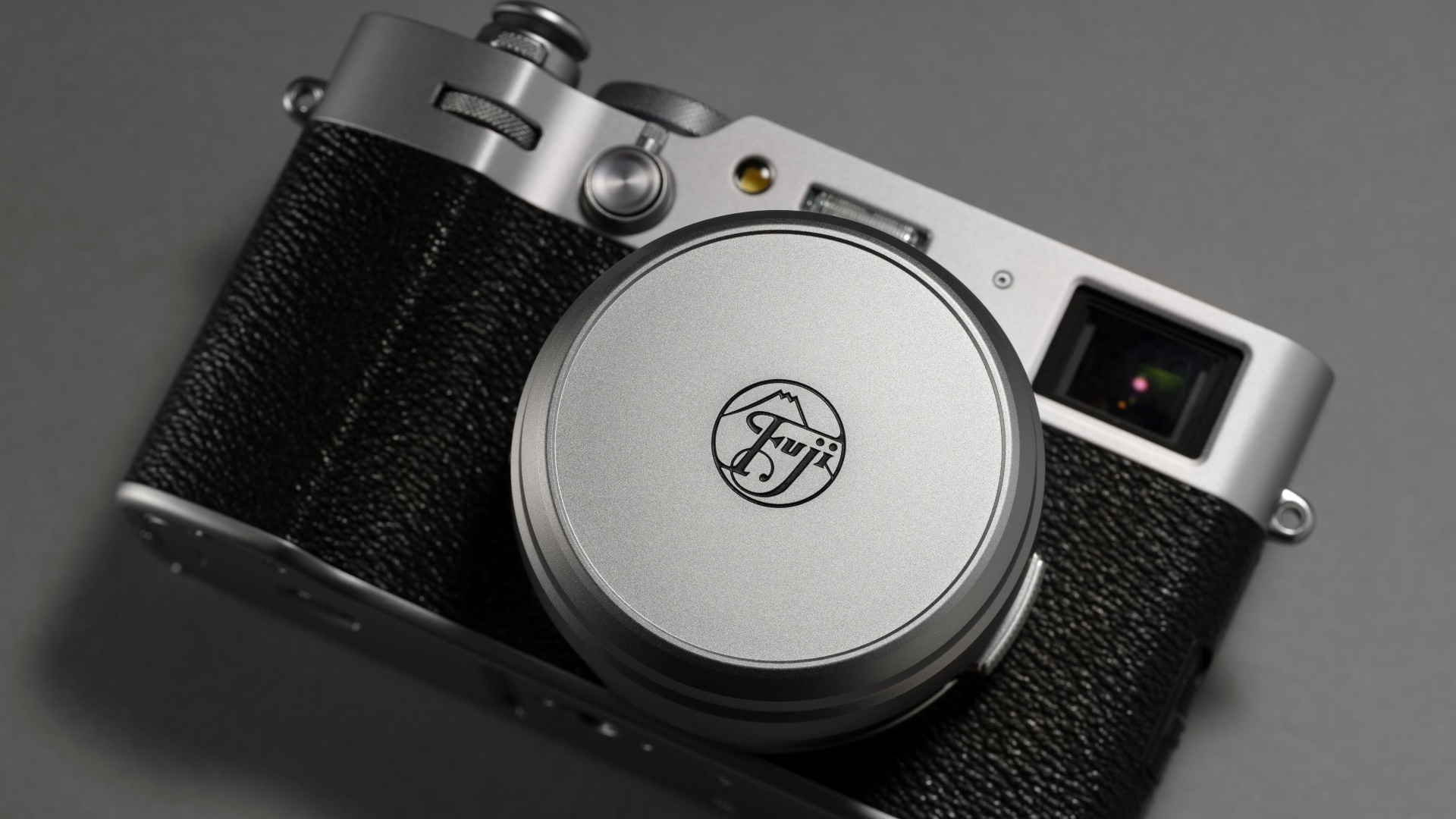
Fujifilm has launched its latest compact digital camera: The Fujifilm X100VI. The sixth generation model introduces a handful of firsts for an X100 series camera.
The X100VI boasts of a new 40.2MP X-Trans CMOS 5 HR sensor and is powered by an X-Processor 5 engine. These work together to allow more light than any prior X100 camera.
For the first time, the camera offers in-body image stabilization with up to 6.0 stops. Filming at up to 6.2K 30p has also been made possible.
High performance
In addition to more light absorption, the X100VI features ISO 125, which was only available as an extension in previous models. Its tracking AF function also ensures high-quality content especially for filming.
The camera comes with 20 film simulation modes, including the new “REALA ACE” mode for a diverse range of distinctive tones. This particular mode offers faithful color reproduction and high-contrast tonality which is suitable for various subjects and situations.
Moreover, the X100VI supports Frame.io Camera to Cloud without the need for additional accessories. Users will only need to wirelessly connect to the internet to automatically upload photos and videos. This speeds up the process from shooting to final editing.
Better operability
The X100VI also has an “Advanced Hybrid Viewfinder” function. With this, users will be able to switch between the optical (OVF) and electronic (EVF) viewfinders. The EVF itself is equipped with a high-resolution OLED panel with about 3.69 million dots.
Meanwhile, the “Electronic Range Finder” (ERF) allows a small EVF to be simultaneously displayed on the OVF. This permits the photographer to capture the subject in the OVF while magnifying the in-focus area in the small EVF.
Functional design
The Fujifilm X100VI retains the compact and lightweight look of its previous iterations. As with its predecessors, the latest model’s body uses aluminum for the top and bottom surfaces.
It has also adopted the X100V’s ultra-thin tilt LCD monitor design. The shape of the grip, on the other hand, has been fine-tuned to ensure a better feel. The positions of the buttons on the back have also been moved.
Limited edition X100VI
In addition to its release, a limited edition X100VI model will be made available to celebrate Fujifilm’s 90th anniversary. Only 1,934 units of the limited edition model will be available worldwide.
These numbered X100VI units are packaged in a special box that includes a special strap, soft release button, and history cards.
The camera body is engraved with the founding logo in 1934, along with a unique serial number.
In the Philippines, The Limited edition X100VI will retail for PhP 130,990. Meanwhile, the standard edition is priced at PhP 103,990.
Accessories
DJI Mic 2 Philippine price, availability revealed
Ultimate pocket-sized pro audio solution
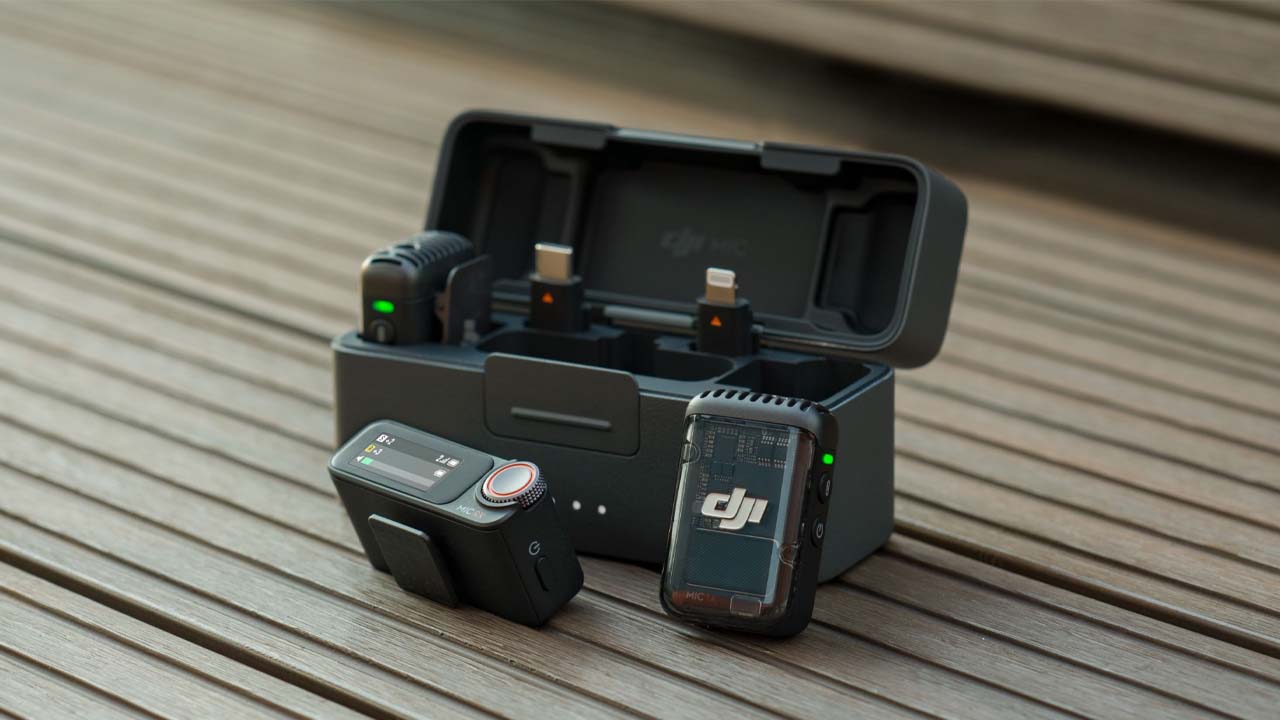
The DJI Mic 2 finally has a local price for Philippine customers. DJI’s latest addition to its content-creating tools is priced at PhP 19,000.
It is available in both black and white and can be purchased at DJI authorized retail stores and online via Lazada and Shopee.
The DJI Mic 2 was officially announced last month via a livestream event as a device built for content creators. A follow-up to the DJI Mic, the company’s first wireless microphone offering, this new version features a slightly updated design and more functionalities.
It retains the 1.1-inch OLED touchscreen display from its predecessor, but the LED light has been moved to the side. The white color option is also an addition for customers.
The microphone is capable of clearer audio recording at 48kHz 24-bit audio and 32-bit float quality. It also supports a higher acoustic overload point at up to 120dB.
As for its noise-cancelling capabilities, the DJI Mic 2 allows users to record and have noise from as close as a meter away filtered, without the need for further editing.
With its own charging case, the mic has an 18-hour battery life overall. Each transmitter and receiver lasts six hours.
@gadgetmatch What’s a mic that every creator needs? It’s the DJI Mic 2 🫶 #DJI #DJIMic #Creator #contentcreatortips
-

 Accessories2 weeks ago
Accessories2 weeks agoApple Vision Pro Review: Two Months Later
-

 Features4 days ago
Features4 days agoFortify your home office or business setup with these devices
-

 Gaming1 week ago
Gaming1 week agoThe Rogue Prince of Persia looks like an ultra-colorful roguelite
-

 Philippines2 weeks ago
Philippines2 weeks agovivo Y100 to release in Philippines on April 27
-

 Gaming1 week ago
Gaming1 week agoStar Wars Outlaws release date revealed
-

 Deals2 weeks ago
Deals2 weeks agoSamsung Awesome April: Deals on Galaxy A series
-

 Events1 week ago
Events1 week agoStellar Blade: PlayStation taps cosplayers to play Eve for game’s launch
-

 Accessories1 week ago
Accessories1 week agoLogitech unveils G Pro X 60 gaming keyboard: Price, details

